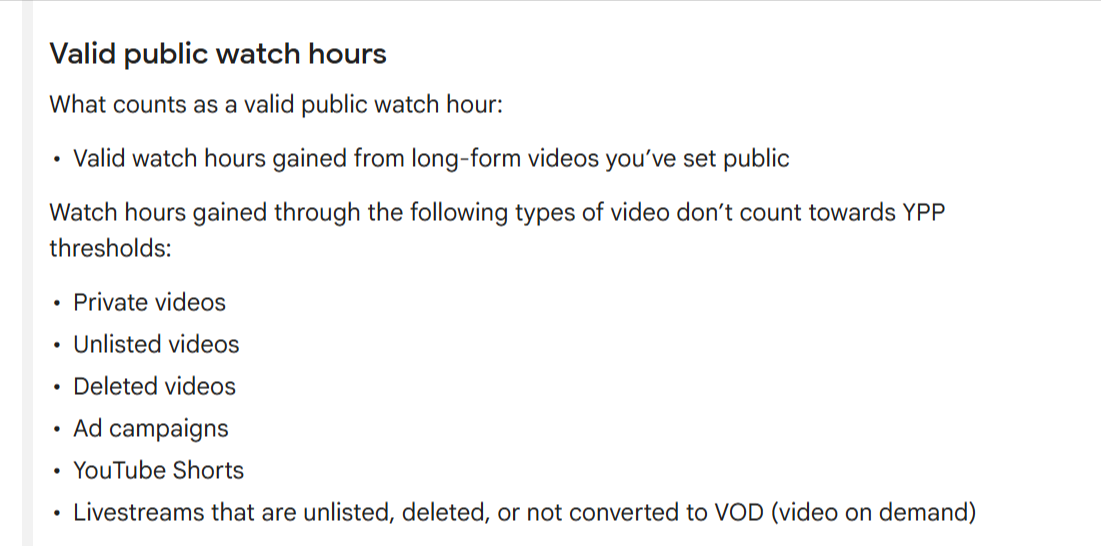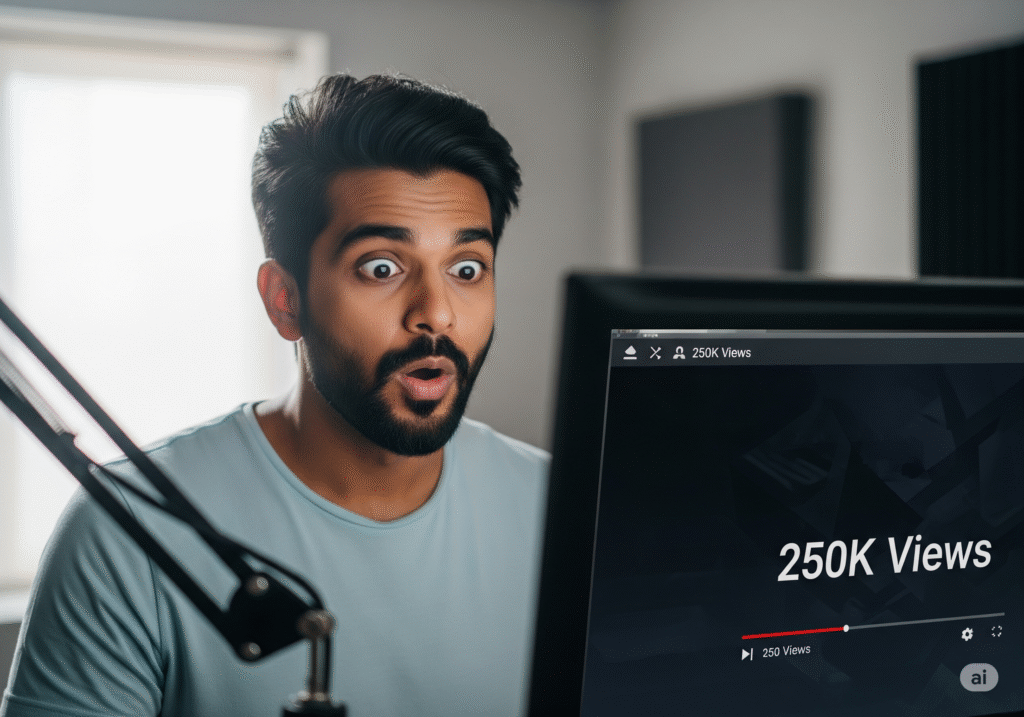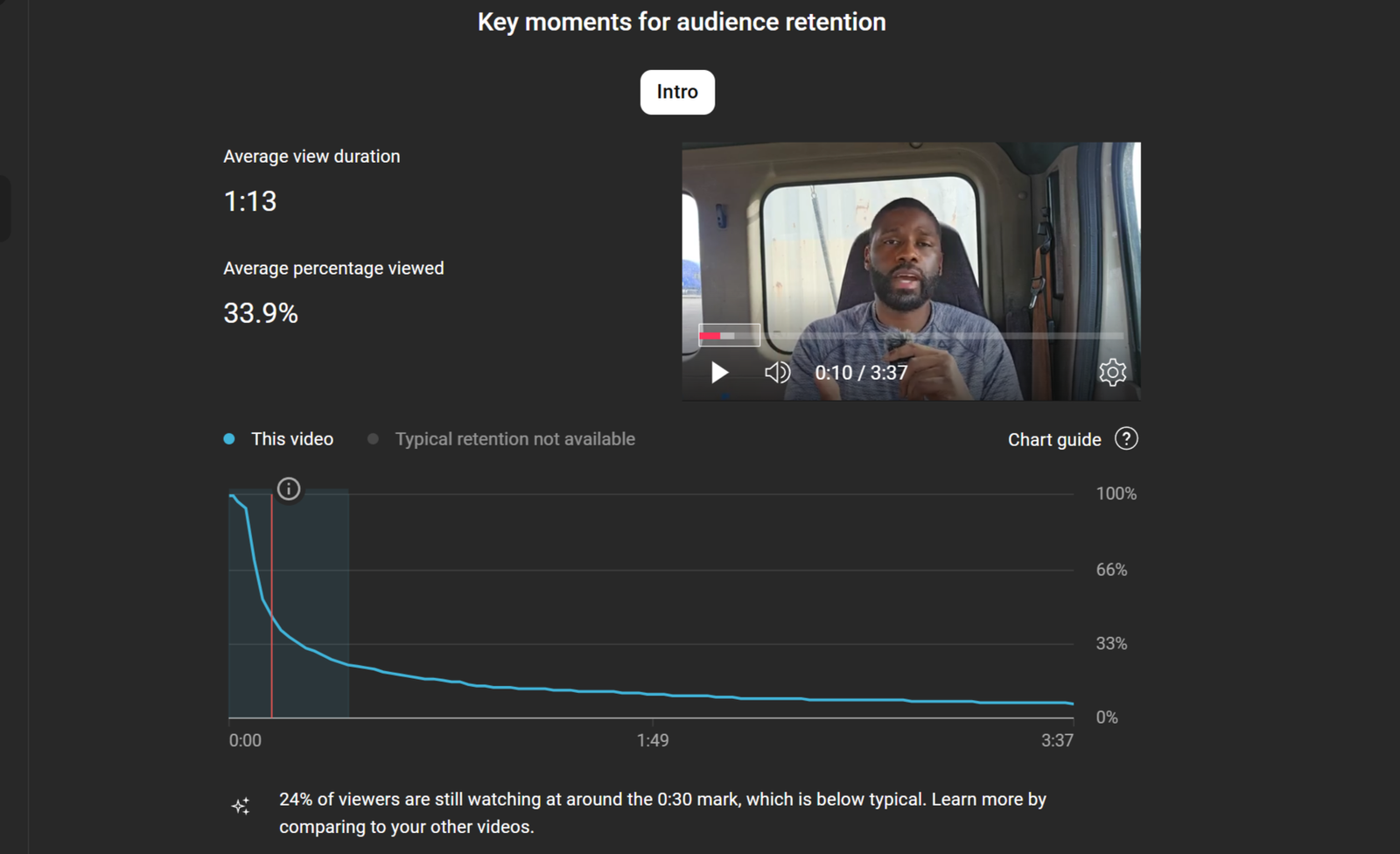Today I’m going to be answering a simple question. Do ads help with watch time for the YouTube requirement for a 1000 hours?
If you don’t know you can promote your YouTube videos as ads to help boost your views and (hopefully) help with getting more engagement.
With that being said, will that help you with getting watch time? If you don’t feel like reading, you can watch this video below.
So the answer is…
The answer is directly no. Watch time from Google Ads just doesn’t count towards the YouTube Partner Program (YPP). It’s a huge pitfall for creators who think they can just pay their way to the finish line.
The reason is simple: YouTube wants to see that people are genuinely interested in your videos. They track what they call “valid public watch hours,” which are all the hours people spend watching your videos because they found them on their own—from a search, a recommendation, or by being subscribed to your channel.
Ads are a different beast. They’re a shortcut to getting your video in front of people, not proof of organic interest. Think of it this way: if you could just buy watch time, anyone with a big enough budget could get monetized, and that would ruin the whole system.
Below is a list of other ways watch time will not count towards monetization.

So, don’t get discouraged! Using ads can still be a smart play. The goal isn’t to get watch time from the ad itself, but to get a brand-new audience to discover your channel.
If they watch your ad, love your video, and then stick around to watch a bunch of your other stuff? That’s where the real magic happens. All of those future views will count towards your watch time goals.

How can you get watch time with Google Ads?
The way you can get watch time with ads is indirectly and you get them between two different ways: one with earned views and then the other with the SEO score.
I’m gonna start with earn views first. Google calls it earned engagement. You have earned likes earned views, and earned subscribers.
When somebody clicks on your ad and they do something else on your channel that’s not on the advertised video within 7 days.
Example – Someone watches your ad then watches a different video of yours. That’s an earned view.
When someone leaves your ad and goes to watch another video on your channel, that watch time counts towards YouTube’s requirement.
A good strategy for that is making a playlist and having part one as the ad. When somebody finishes part one they probably want to go see part two so right after.
Part two and so on is an earned view and that watch time counts towards YouTube’s requirement.
It’s always a good idea to try to optimize keeping people on your work but with ads it also gives like a little more emphasis to try to keep a person’s attention to your work and not try to go to somebody else.

Can Google Ads Increase your video for SEO Ranking?
The relationship between Google Ads and YouTube SEO is subtle and indirect. The short answer is no, running a Google Ad campaign doesn’t directly improve your video’s search ranking in the same way that a good title and description do.
Google’s own documentation makes it clear that their algorithm prioritizes organic signals. However, Google Ads can have a powerful indirect effect on your video’s SEO. Here’s how it works.
The Launchpad Effect
The hardest part of getting a new video to rank is getting it a strong initial push. By using Google Ads to show your video to a highly targeted audience, you can get an initial burst of views, likes, and comments.
This early engagement tells the YouTube algorithm that your video is worth paying attention to. It’s like giving your video a running start.
Attracting Your Target Audience
An ad campaign can introduce your content to people who have never heard of you. While the initial views from the ad may not count for monetization, if a viewer likes what they see, they might subscribe, watch other videos on your channel, or even search for your channel directly later on.
All of these subsequent, organic actions will send positive signals to the algorithm, boosting your channel’s overall health and discoverability.
Google Ads gives you valuable data. You can see exactly which people are watching your video and what they’re responding to. You can use this information to create better videos in the future that are more likely to succeed on their own.

Then Can Ads Lower your video in SEO Ranking?
It is a possibility. Ads in general have very low watch retention. You could see the average ad’s watch time be less than 20 seconds.
When you run an ad, your video is often shown to people who aren’t actively searching for it. For example, it might play as a pre-roll ad before another video. Because these viewers didn’t choose to watch your content, they are far more likely to skip the ad or click away quickly.
YouTube’s algorithm sees low retention as a strong signal that viewers aren’t enjoying your content. Even though the watch time from the ad views doesn’t count toward monetization, the poor engagement metrics can still send a negative signal.
The algorithm might then be less likely to organically recommend your video to other viewers, as it concludes that the video isn’t engaging enough to keep people on the platform.
You can try a few different things to avoid this:
1.Make a duplicate video of the video you want to make an ad for, and set it as private. Then use the private video for promotion. You’ll need to change the copy in some small way like adding a few seconds to the video or changing the file name so YouTube doesn’t flag it as a copy.
2.Don’t promote a brand-new video that you want to rank organically. Instead, promote a video that is a “channel trailer” or a “channel highlights” reel. This video isn’t meant to rank organically, so low retention won’t hurt your main content.
3.Create ads that are genuinely engaging. Use a hook that captures attention in the first 5 seconds to reduce skips.
4.Target your audience very carefully. The more precisely you target your ad, the more likely you are to find people who will actually watch and enjoy your video, which can lead to better engagement metrics and a more positive signal for the algorithm.
An alternative to getting watch time with Google ads?
While you can’t get watch time from ad campaigns, there still may be a way to get more watch time for the desired video. I haven’t tried this yet so I’ll need to update this later when I do.
First, you’ll need your own website to try this. Make an ad campaign for a page on your website. A landing page for example. Then embed your video in the page. This way you have a higher chance of having someone watch the video longer since they clicked on it and the video isn’t directly promoted by Google Ads.
Once again, still don’t know if this works but not a bad idea to try.
All in all..
Even though it will be a turn off to some, maybe even most creators to not use Google Ads with this new knowledge, I do want to make sure you understand that there are still benefits to starting a campaign for your channel. Hopefully this article gave you a better idea on what to expect if you do make one.
If you want to make YouTube ads with your videos but feel that Google Ads is too complex, you can try Google Ads partners like Prodvigate or Sprizzy. I’ve actually used both of them before and have a review on Prodvigate here and a review on Sprizzy here.



No responses yet